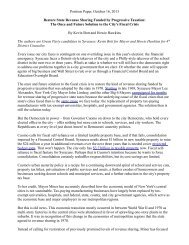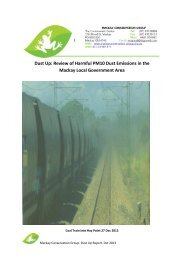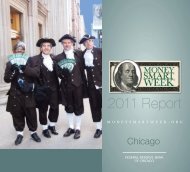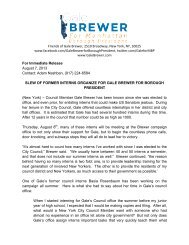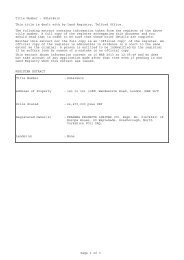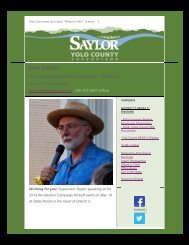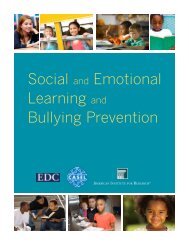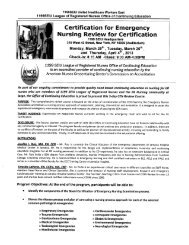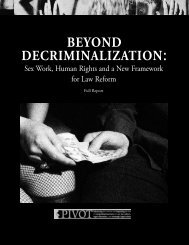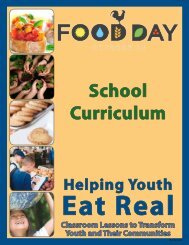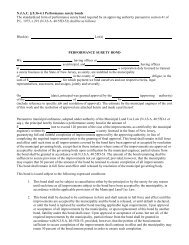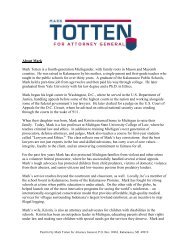You also want an ePaper? Increase the reach of your titles
YUMPU automatically turns print PDFs into web optimized ePapers that Google loves.
Lesson 3: Not Too Much<br />
— Getting Started —<br />
Overview<br />
Students review the health and ecological benefits<br />
of eating real, and mostly plants and what positive<br />
changes they have made. Then they learn about<br />
why it is important to limit overly processed foods<br />
that contain little or no nutrients and often have<br />
high amounts of added fat and sugar. They learn<br />
that the recommendation for empty calories is no<br />
more than 150 calories per day for this age group<br />
and learn to translate that to teaspoons of sugar<br />
and fat. They measure out the teaspoons of sugar<br />
and fat in common foods and learn that many of<br />
these foods have more than the recommended daily<br />
maximum — just in one food or drink. Since we<br />
live in an environment that is dishing out more fat<br />
and sugar than our bodies can handle, the “Not Too<br />
Much” message is very important. The students write<br />
a paragraph or create a drawing that describes why<br />
eating plenty of whole plant-based foods and fewer<br />
overly processed foods is personally important.<br />
Finally, they create a “small-size-it” action plan for<br />
how they will have a small size when they do have<br />
processed foods such as sweetened drinks, chips,<br />
candy, fast foods, and baked goods.<br />
Behavior Change Objective<br />
As a result of this lesson, students will eat fewer overly<br />
processed foods with excessive sugar and fat.<br />
Learning Objectives<br />
Students will be able to:<br />
• assess if they have successfully consumed more<br />
whole, plant-based foods at their meals;<br />
• state the number of empty calories they can have<br />
in a day and how that translates into snacks and<br />
drinks;<br />
• discuss how much fat and sugar are in commonly<br />
consumed snacks and drinks;<br />
• create an action plan for “small-sizing” overly<br />
processed foods.<br />
Background for Teachers<br />
The first two lessons are about what to eat — to eat<br />
real food and to eat mostly plants. This lesson is on<br />
the third <strong>Food</strong> <strong>Day</strong> Eating Goal, to not eat too much<br />
of overly processed foods. In today’s world, telling<br />
kids what not to eat is a very necessary reality.<br />
The food industry aggressively markets unhealthful<br />
foods to kids yet rarely prompts children to eat<br />
whole, healthful meals. These marketing efforts<br />
are pervasive, and include: television advertising,<br />
advergaming web sites, cartoon characters on<br />
packages, and even toys included with nutritionally<br />
poor fast-food meals. They help kids cultivate a taste<br />
for white bread, French fries, fatty meat, fatty cheese,<br />
and sweetened drinks. Most of the foods marketed to<br />
kids are mediocre fast foods, sugary breakfast cereals,<br />
and candies. Many of them are based on white flour,<br />
sugar, fat, and salt, plus a sprinkling of artificial<br />
colorings and flavorings.<br />
Additionally, ordinary sugar and high-fructose corn<br />
syrup make up one-sixth of the average American’s<br />
calorie intake. Half of all added sugars come to us in<br />
the form of “liquid candy”: soft drinks, fruit drinks,<br />
sports drinks, and iced teas. And it is those sugary<br />
drinks that pose the biggest risk of weight gain,<br />
because they don’t seem to curb appetite as much as<br />
solid foods do.<br />
See this lesson as a way to give your students the<br />
antidote to food industry marketing. They learn that<br />
our bodies cannot handle excessive sugar and fat<br />
on a regular basis and see first-hand how much fat<br />
and sugar are in common foods. We believe that the<br />
way to have students become people who want to<br />
make healthful choices for themselves, despite the<br />
obstacles, is for them to believe that it has personal<br />
benefits. Encourage your students to think seriously<br />
as they write their personal essay on making healthful<br />
choices, and encourage them to make a “small-size-it”<br />
action plan that is specific, clear, and measurable to<br />
be on the road to positive change.<br />
44 | <strong>Food</strong> <strong>Day</strong> Lessons



